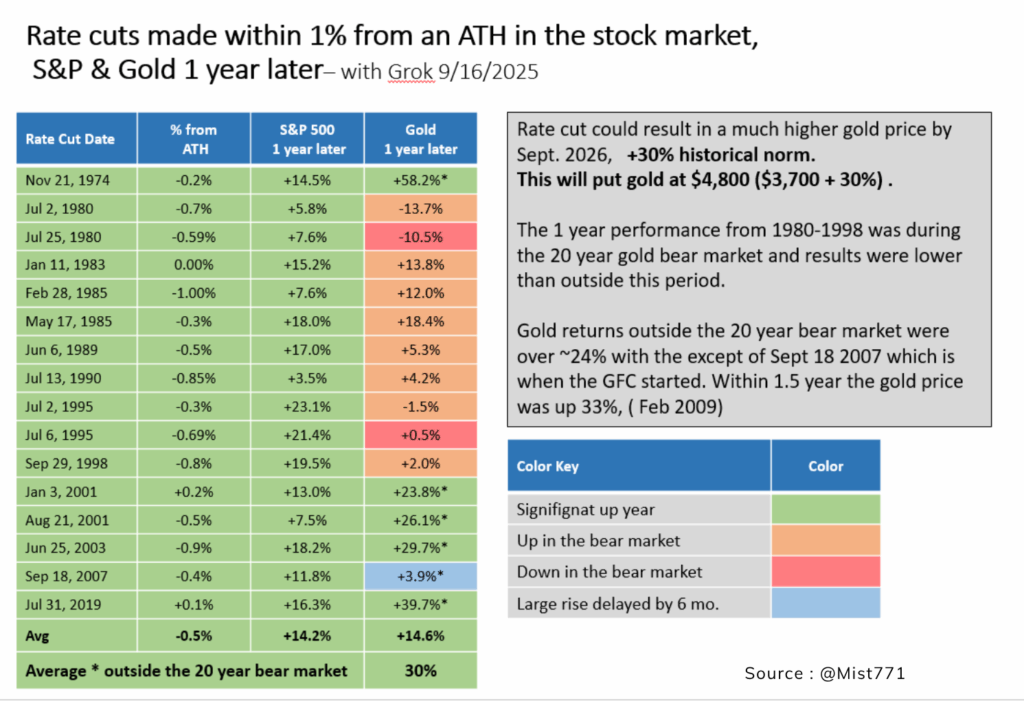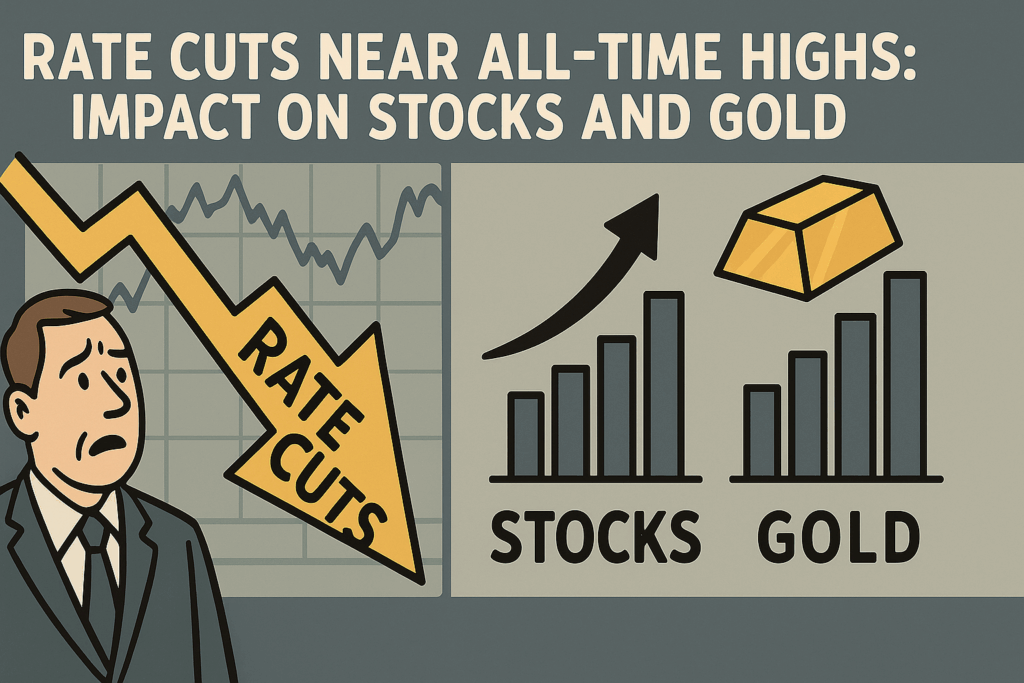Rate Cuts Near All-Time Highs
When rate cuts are announced while stock prices are still close to all-time highs, the market usually shows interesting results. Looking at the data from the past 40 to 50 years, whenever such cuts happened within 1% of record highs, the S&P 500 one year later often showed double-digit gains. (see the image below)

On average, it delivered around 14.2% returns, while gold also performed well with an average of about 14.6%.
Important Announcement
Nifty returned an impressive 13% CAGR in 35 yrs – But why do most investors always lose?
Watch this special video by Alok that dives deeper into this issue
https://youtu.be/xF9DgYHyLLo
Register for the webinar to know more about a brand new strategy that aims to solve this recurring problem.
Date: Saturday, 4th October
Time: 11:00 AM
Exclusive Offer only for Webinar Attendees
Registration Link : https://us05web.zoom.us/meeting/register/qNXvQUMbTaOHv-Rrb5U7Aw#/
How Gold and Stocks React
Both S&P 500 and gold have done fairly well when rate cuts started from such high levels. Even though the S&P 500 was already at a strong point, it still managed to give healthy returns in the following year. Gold too delivered positive growth, showing that it holds value in these times.
The Case of Gold’s Bear Market
There was one long 20-year bear market in gold where the performance looked weak. This happened because central banks across the world were selling gold together under a treaty. That was an unusual case and not a normal trend. If this exceptional period is removed from the data, the average gain in gold after rate cuts comes out closer to 30%, which is very significant.
What the Latest Rate Cut Means
With the latest rate cut now announced, gold could see a strong rise over the next couple of years. If history repeats, gold may rise around 30% from current levels. That would mean gold could touch nearly $4,800 compared to the $3,600–$3,700 range today. Such a move can make a huge difference in long-term wealth planning.
Impact on Emerging Markets
While US equities may benefit from these cuts, the same cannot always be said for emerging markets. In fact, history shows that emerging market equities do better when US interest rates are rising, not when they are falling. During US rate cuts, gold prices in local currencies usually climb higher, while emerging market stocks may stay flat or even decline.
Building a Balanced Portfolio
The lesson here is that asset allocation becomes very important in such times. A mix of gold along with local equities can make the portfolio stronger than relying only on global or domestic equities. Having the right balance between assets ensures protection as well as growth when rate cuts bring these shifts in the market.









